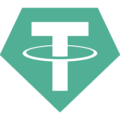Providers
Bitcoin SV (BSV) emerged following a hard fork of the Bitcoin Cash (BCH) blockchain in 2018, which had in turn forked from the BTC blockchain a year earlier following the blocksize wars. BSV claims to fulfill the original vision of the Bitcoin protocol and design as described in Satoshi Nakamoto’s white paper, early Bitcoin client software and known Satoshi writings. BSV aims to offer scalability and stability in line with the original description of Bitcoin as a peer-to-peer electronic cash system, as well as deliver a distributed data network that can support enterprise-level advanced blockchain applications. To this end, it has removed artificial block size limits and re-enabled Script commands and other technical capabilities which had been historically disabled or restricted by the protocol developers of the BTC blockchain.
According to the MultiversX crypto team, the project implements three types of segmentation: state, transactions, and network, using the parallel processing method to speed up the time and increase the number of transactions.
MultiversX is a comprehensive software that uses Adaptive State Sharding to scale while sharing infrastructure to support a growing number of applications/transactions on the ledger. A variation of the traditional PoS operational protocol guarantees the connection to the platform of all sections of the network, separated during sharding. Hence, the integrated environment is involved in the development of dApps, which are imitations of products and services.
MultiversX developers combined three sharding methods to create their own unique adaptive one. They divide the network into four shards: three shards are execution shards that process transactions, validating 5400 transactions per second, and Metachain is the fourth shard that coordinates and completes transactions.
Sharding types include: State sharding where the history of the network, or state, is distributed across different sections of the network, or shards. Segments have their own ledger, nodes store the state of each segment; Transaction sharding where transactions are mapped to segments and processed, segments process transactions in parallel and nodes capture the state of the entire network; Network sharding where the nodes are grouped into segments and then processed. Network slicing contributes to optimizing communications.
Bitcoin is a decentralized cryptocurrency originally described in a 2008 whitepaper by a person, or group of people, using the alias Satoshi Nakamoto. It was launched soon after, in January 2009.
Bitcoin is a peer-to-peer online currency, meaning that all transactions happen directly between equal, independent network participants, without the need for any intermediary to permit or facilitate them. Bitcoin was created, according to Nakamoto’s own words, to allow “online payments to be sent directly from one party to another without going through a financial institution.”
Some concepts for a similar type of a decentralized electronic currency precede BTC, but Bitcoin holds the distinction of being the first-ever cryptocurrency to come into actual use.
Ethereum was first described in a 2013 whitepaper by Vitalik Buterin. Buterin, along with other co-founders, secured funding for the project in an online public crowd sale in the summer of 2014. The project team managed to raise $18.3 million in Bitcoin, and Ethereum’s price in the Initial Coin Offering (ICO) was $0.311, with over 60 million Ether sold. Taking Ethereum’s price now, this puts the return on investment (ROI) at an annualized rate of over 270%, essentially almost quadrupling your investment every year since the summer of 2014.
The Ethereum Foundation officially launched the blockchain on July 30, 2015, under the prototype codenamed “Frontier.” Since then, there has been several network updates — “Constantinople” on Feb. 28, 2019, “Istanbul” on Dec. 8, 2019, “Muir Glacier” on Jan. 2, 2020, “Berlin” on April 14, 2021, and most recently on Aug. 5, 2021, the “London” hard fork.
Ethereum’s own purported goal is to become a global platform for decentralized applications, allowing users from all over the world to write and run software that is resistant to censorship, downtime and fraud.










